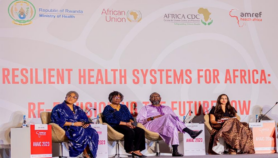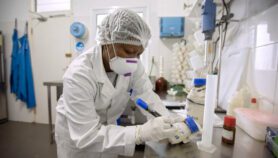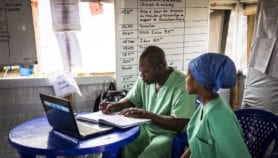Send to a friend
The details you provide on this page will not be used to send unsolicited email, and will not be sold to a 3rd party. See privacy policy.
Developing countries are turning to each other for affordable and targeted solutions to national health problems, a study of South–South biotechnology collaborations has found.
‘Brother–sister’ trade relationships between developing countries allow cheaper drugs and vaccines to reach more poor people than do ‘parent–child’ relationships with the developed world, according to a study published in Nature Biotechnology (May 10).
The study was a collaboration between researchers from Canada and five developing countries who interviewed 300 biotech company staff from 13 nations. The researchers said it was the lack of information about such collaborations that prompted the study.
Halla Thorsteinsdóttir, lead author, from
the McLaughlin-Rotman Centre for Global Health
"India and South Africa, for instance, are working together on issues like HIV/AIDS and malaria," she said.
Meanwhile Egypt had turned to China when it desperately needed insulin, establishing a bilateral trade relationship that continues to benefit both countries.
And Brazil, China, Cuba, Nigeria, Russia, Thailand and Ukraine have networked to promote research and development of diagnostics kits, drugs and vaccines for HIV/AIDS.
The collaborations occur against a background estimated 12.5 per cent increase in the rate of South–South trade every year with emerging economies like China and India experiencing unprecedented growth.
Over a quarter (27 per cent) of the developing world bio-technology firms surveyed for the study confirmed they were involved in South–South partnerships. But South–North collaborations still dominate with over half (53 per cent) of firms reporting such relationships.
Thorsteinsdóttir said the new trade channels were good news for philanthropic organisations and global health networks, which could use them to assist developing countries.
The study also found that these collaborations were typically initiated by firms themselves, rather than by outsiders, but that these firms find it challenging to identify partners in other countries.
"Finding enough detailed information about potential partners is a difficult task and building trust can also be challenging. Thus there definitely is scope for governments and other third parties to take a more proactive role in initiating collaborations," the study said.
One driver for South–South collaborations can be a mutual feeling of solidarity, said Tirso Saenz, co-author and researcher at the University of Brasilia, Brazil.
For example, she said, during a meningitis A outbreak in Africa in 2007, the WHO identified Bio-Manguinhos, a bio-immune technology institute in Rio de Janeiro, Brazil, and the Finlay Institute, a centre for vaccines research and production, in Havana, Cuba, as the most suitable suppliers of a meningitis vaccine.
Working together and using their respective strengths, the two countries were able quickly to develop and supply a cost-effective vaccine, capable of combating the African meningitis outbreak. But neither firm, alone, could have done so.
"Political will and solidarity motivation can help developing countries. This type of meningitis exists in neither Brazil nor Cuba, but both countries cooperated to solve this serious issue in Africa", said Saenz.
References
Nature Biotechnology 28 (5), 407–416 (2010)













